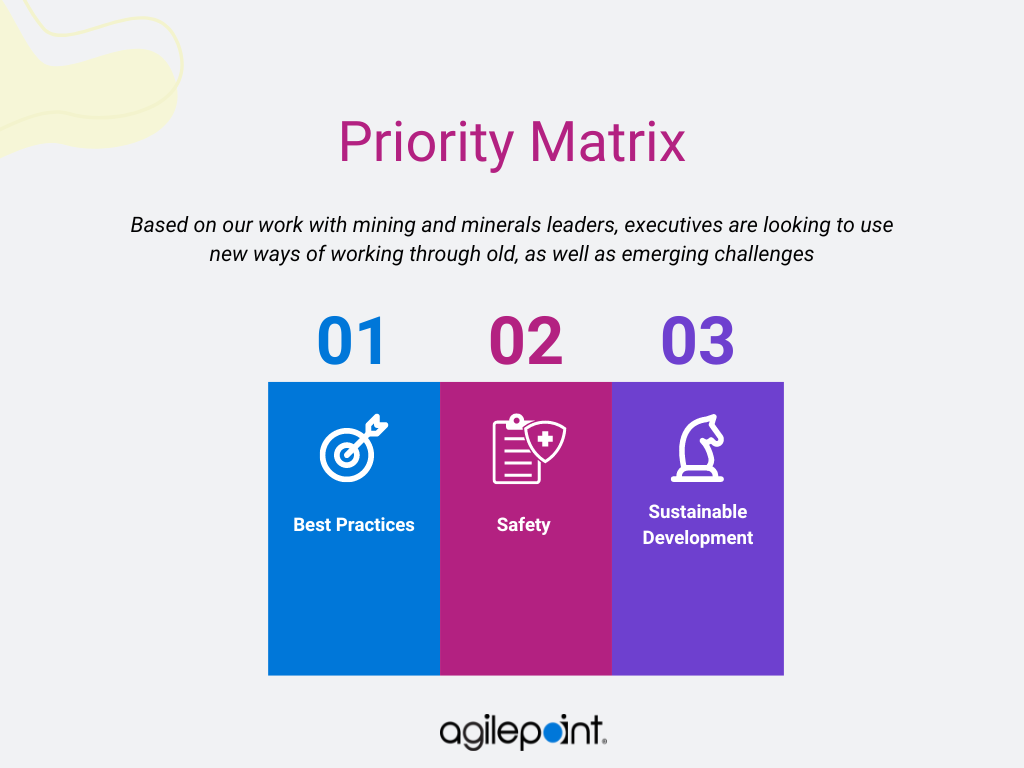
Mining companies face many safety challenges that they must proactively manage to ensure employee well-being, business continuity, and regulatory compliance.
For instance, Uranium mining poses a significant threat to the safety of workers, with a range of hazardous conditions that require constant vigilance. Workers are at risk of exposure to dangerous levels of radiation and dust, working in confined spaces, operating heavy machinery, managing the toxic waste produced by mining, known as tailings, and balancing the need for large quantities of water.
We noticed that future-oriented executives in the mining industry are addressing these risks by implementing robust safety protocols and providing extensive training and protective equipment to workers with strict adherence to new regulations and industry standards, e.g., CSDD (Corporate Sustainability Due Diligence) Directive and CSRD (Corporate Sustainability Reporting Directive), as well as ongoing monitoring and measurement of environmental impact, taking prompt actions to rectify any negative effects. As a result, industry leaders are now paying attention to new work methods.
Emerging Priorities in Mining
Based on our work with the industry firms, miners have prioritized three areas that directly impact their operations, namely:
- Adoption of best practices
- Sustainable development
- Safety
Adopting best practices, sustainable development, and safety are closely related and intertwined. As for best practice adoption, we notice interest in four key areas:
Assessing and reporting environmental impact as per new regulations:
Companies must comply with the latest EU directives, such as CSDD (Corporate Sustainability Due Diligence) Directive and CSRD (Corporate Sustainability Reporting Directive), to accurately assess and report on their environmental impact. These directives are designed to be applied in conjunction with one another by corporate entities. In the coming years, companies will need to report their financial figures and their impact on various aspects such as governance, ecological, social, and environmental impact where they operate. While these criteria are vital for sustainable development goals, the most crucial one is environmental impact, and companies must begin reporting on it now.
Ensuring operational safety:
Safety is of paramount importance in mining and associated industries. Companies must prioritize the safety of their operations and take the necessary steps to minimize risks. For example, in the case of Uranium mining, which is highly radioactive, companies have a procedural approach to safety to prevent contamination. To ensure compliance with safety protocols, workers must document equipment movements and verify that all procedures and safety measures have been carried out before equipment is removed from the mining site. Companies want to move away from using paper forms for these processes.
Traceability through Digital Workflows:
Forward-looking companies are improving traceability through the implementation of digital workflows. Traditional paper-based processes are prone to errors, misplacement, and lack of transparency. By incorporating barcodes, scanning, and digital filing systems in mining operations, the visibility and traceability of materials and assets can be enhanced, and historical data can be accurately recorded. This improves the efficiency of mining operations and eliminates the risk of losing track of historical data related to asset and material location and condition.
Data Analysis and reporting:
More companies are starting to incorporate data analysis and reporting in mining operations. Miners collect a vast amount of data, including geological, environmental, production, safety, equipment, logistics, and human resources data. Modern companies are using this data in their operations by defining key performance indicators (KPIs) and analyzing data to identify areas for improvement, especially in safety and compliance. As we know, utilizing paper-based reporting methods can be both inconvenient and costly; by incorporating automated data analysis and reporting capabilities, some companies identify and address operational performance gaps, leading to improved efficiency and optimization of operations.
Way Forward
These are a few priorities leading mining firms are engaging in; ultimately, with its high running costs and numerous uncertainties, mining operations can only become sustainable if executives:
- Reverse the declining productivity rates through the use of new technologies
- Increase the adoption of ‘Software-as-a-service’ and ‘Platform-as-a-service’ solutions that can be rapidly be scaled and tailored to their automation needs
- Adopt technology solutions that do not pose risk to their compliance with safety and environmental regulations
Lighthouse Cases
Below we have captured a few scenarios where customers used a modern approach to business process automation in a highly regulated, cost-conscious, and competitive industry.
- Swiss Energy Company CKW Turns to AgilePoint to Modernize Service Delivery and Legacy Processes
- Defense Firm Uses AgilePoint Low-Code Automation Solutions to Accelerate Global Growth Strategy
- GVTC Communications Gains New Competitive Edge Using AgilePoint Process-Centric Applications
Try AgilePoint free for 30 days to learn how it can benefit your team’s automation needs, or request a Demo to have someone from AgilePoint shorten your learning curve.
Are you ready to reengineer your business
automation processes?

A modern process automation and orchestration platform that enables you to open up and seize new business opportunities, supercharge innovation, unlock new levels of efficiency and productivity, and deliver the experiences that help you win.
Follow Us
Platform

Automate business processes and workflows at scale. AgilePoint helps enterprises democratize and accelerate digital transformation, reduce technical debt and future-proof ROI.
Resources
© 2023 AgilePoint. All rights reserved.



